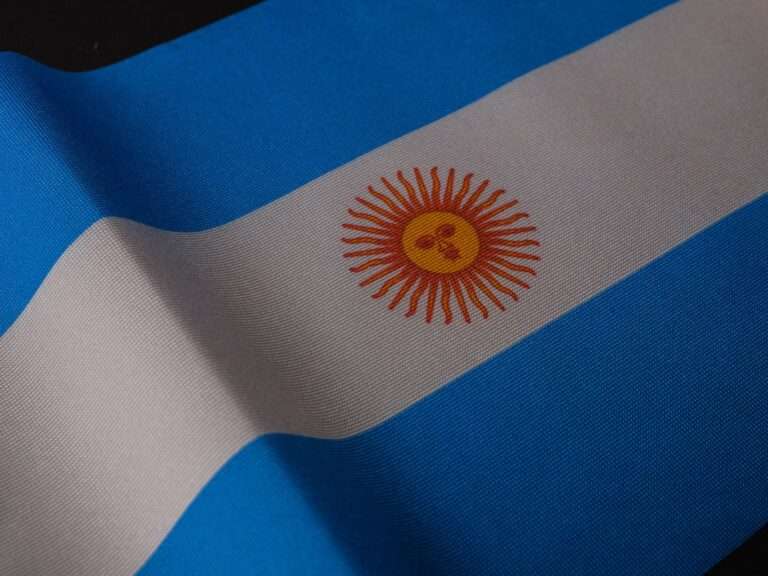How is the pomegranate symbol used in Persian culture?

The pomegranate holds significant cultural importance in Persian society, representing fertility, abundance, and eternal life. Its symbolic value dates back to ancient times, featuring prominently in Persian mythology, religious practices, artistic expressions, literature, culinary traditions, and customs. The fruit’s vibrant red hue and numerous seeds have established it as a potent emblem of vitality and renewal in Persian culture.
The pomegranate’s association with fertility and prosperity has led to its widespread use in wedding ceremonies and festive occasions. It is also a recurring motif in various forms of Persian art and literature. The fruit’s enduring presence in Persian culture reflects its timeless significance and the deeply ingrained beliefs and traditions of the Persian people.
The symbolism of the pomegranate in Persian culture is multifaceted, encompassing not only fertility and prosperity but also the cyclical nature of life and death. Its rich historical and cultural significance has cemented its status as a lasting symbol across various aspects of Persian society. The pomegranate’s connection to eternal life and abundance has resulted in its incorporation into numerous rituals and celebrations, where it often serves as a representation of good fortune and blessings.
The pomegranate’s prominence in Persian culture demonstrates the enduring power of symbolism and the profound influence of long-standing beliefs and traditions that have shaped Persian society over centuries. Examining the various facets of the pomegranate’s symbolism in Persian culture provides insight into its significance and the profound impact it has had on the lives of Persian people throughout history.
Key Takeaways
- The pomegranate is a significant symbol in Persian culture, representing fertility, prosperity, and abundance.
- In Persian mythology and religion, the pomegranate is associated with the cycle of life, death, and rebirth, and is often linked to the goddess Anahita.
- The pomegranate has been a popular motif in Persian art and literature for centuries, symbolizing love, beauty, and the passage of time.
- Pomegranates are a staple in Persian cuisine and are often used in traditional dishes and beverages, symbolizing health and vitality.
- Pomegranates play a central role in Persian weddings and celebrations, symbolizing love, fertility, and the hope for a prosperous future.
The Pomegranate in Persian Mythology and Religion
The Pomegranate and the Goddess Anahita
In Zoroastrianism, the ancient religion of Persia, the pomegranate was associated with the goddess Anahita, who was revered as the deity of fertility, water, and wisdom. The pomegranate’s abundance of seeds was seen as a symbol of fertility and prosperity, and it was often used in rituals and offerings to ensure a bountiful harvest and healthy offspring.
The Pomegranate and the Afterlife
The pomegranate’s significance in Persian mythology and religion is also reflected in its association with the afterlife. In ancient Persia, it was believed that consuming pomegranate seeds would grant immortality in the afterlife. This belief is echoed in various myths and legends, where the pomegranate is often depicted as a symbol of eternal life and renewal.
The Enduring Symbolism of the Pomegranate
The pomegranate’s deep red color was also seen as a representation of the cycle of life and death, further emphasizing its importance in Persian mythology and religious beliefs. The pomegranate’s enduring presence in Persian culture is a testament to its deep-rooted symbolism and its profound impact on the spiritual beliefs and traditions of the Persian people.
Pomegranate in Persian Art and Literature

The pomegranate has been a recurring motif in Persian art and literature for centuries, symbolizing fertility, prosperity, and abundance. In Persian miniature paintings, the pomegranate is often depicted as a symbol of life and vitality, with its vibrant red color and abundance of seeds representing the cycle of life and the promise of new beginnings. Its presence in art reflects its enduring significance in Persian culture and its deep-rooted symbolism as a source of inspiration and creativity.
In Persian literature, the pomegranate is often used as a metaphor for love, beauty, and passion. Its rich symbolism has inspired poets and writers to incorporate it into their works as a symbol of fertility and prosperity. The pomegranate’s association with abundance and vitality has made it a powerful symbol in Persian poetry and prose, where it is often used to evoke feelings of joy, hope, and renewal.
Its presence in literature reflects its timeless significance in Persian culture and its enduring impact on the artistic expression of the Persian people.
Pomegranate in Persian Cuisine and Tradition
The pomegranate holds a special place in Persian cuisine, where it is used in a variety of dishes to symbolize fertility, prosperity, and abundance. Its vibrant red color and sweet-tart flavor make it a popular ingredient in traditional Persian recipes, where it is often used to add depth and complexity to savory dishes such as khoresh (stews) and rice pilafs. The pomegranate’s abundance of seeds also makes it a popular garnish for salads, yogurt dishes, and desserts, adding a burst of color and flavor to traditional Persian meals.
In addition to its culinary uses, the pomegranate is also an important symbol in Persian traditions and rituals. It is often included in haft-seen, a traditional table setting for Nowruz, the Persian New Year celebration. The haft-seen table typically includes seven symbolic items that begin with the letter “s” in Farsi, one of which is sekanjabin (a sweet vinegar drink) made with mint and pomegranate juice.
The pomegranate’s presence in Persian cuisine and tradition reflects its enduring significance as a symbol of fertility, prosperity, and abundance.
Pomegranate in Persian Weddings and Celebrations
The pomegranate plays a significant role in Persian weddings and celebrations, where it is often used as a symbol of fertility, prosperity, and good fortune. In traditional Persian weddings, the bride and groom may break a pomegranate together as a symbol of their unity and the hope for a fruitful marriage. The abundance of seeds inside the pomegranate represents the couple’s wish for a prosperous future filled with love, joy, and abundance.
In addition to weddings, the pomegranate is also a prominent feature in other celebrations such as Nowruz (Persian New Year) and Yalda Night (the longest night of the year). During these festivities, pomegranates are often displayed as decorations or included in traditional dishes to symbolize renewal, abundance, and good luck for the coming year. The pomegranate’s presence in Persian weddings and celebrations reflects its enduring significance as a symbol of fertility, prosperity, and blessings for special occasions.
The Pomegranate as a Symbol of Fertility and Prosperity

The Pomegranate in Ancient Persia
In ancient Persia, the pomegranate was associated with fertility rituals and offerings to ensure a successful harvest and healthy offspring.
A Symbol of Abundance in Persian Culture
Its enduring symbolism as a source of abundance has led to its widespread use in weddings, celebrations, art, literature, cuisine, and traditions. The pomegranate’s association with prosperity is also reflected in its use as a decorative motif in Persian architecture, textiles, and handicrafts.
A Visual Reminder of Fertility and Prosperity
The pomegranate’s distinctive shape and vibrant color make it a popular design element in traditional Persian art forms such as carpets, ceramics, metalwork, and textiles. The pomegranate’s presence in these artistic expressions serves as a visual reminder of its enduring symbolism as a source of fertility, prosperity, and abundance.
Contemporary Use of the Pomegranate Symbol in Persian Culture
In contemporary Persian culture, the pomegranate continues to hold significant symbolism as a source of fertility, prosperity, and abundance. Its enduring presence can be seen in various aspects of modern life, from its use in art, literature, cuisine, and traditions to its incorporation into popular culture and commercial products. The pomegranate’s rich symbolism has also made it a popular motif in contemporary fashion, jewelry, home decor, and accessories.
The pomegranate’s symbolism is also celebrated through various cultural events and festivals that highlight its significance in Persian culture. For example, the annual Pomegranate Festival in Iran showcases the diverse uses of this fruit through culinary demonstrations, art exhibitions, music performances, and cultural activities. This festival serves as a platform for promoting awareness of the pomegranate’s cultural significance while celebrating its role as a symbol of fertility, prosperity, and abundance.
In conclusion, the pomegranate holds a special place in Persian culture as a symbol of fertility, prosperity, and eternal life. Its enduring significance can be seen in various aspects of Persian mythology, religion, art, literature, cuisine, traditions, weddings, celebrations, and contemporary culture. The pomegranate’s rich symbolism reflects the deep-rooted beliefs and traditions that have shaped Persian society for centuries, making it an enduring emblem of life and vitality for the Persian people.
FAQs
What is the significance of the pomegranate in Persian culture?
The pomegranate is a symbol of fertility, abundance, and good fortune in Persian culture. It is often associated with the cycle of life and death, as well as with the beauty of the natural world.
How is the pomegranate used in Persian art and literature?
The pomegranate is a common motif in Persian art and literature, often representing love, beauty, and the divine. It is frequently depicted in paintings, textiles, and ceramics, and is also referenced in poetry and storytelling.
What role does the pomegranate play in Persian cuisine?
Pomegranates are a popular ingredient in Persian cuisine, used in dishes such as fesenjan (a stew made with pomegranate paste and ground walnuts) and as a garnish for rice and salads. Pomegranate juice is also a common beverage in Iran.
How is the pomegranate used in Persian rituals and celebrations?
Pomegranates are often used in Persian rituals and celebrations to symbolize fertility, prosperity, and the sweetness of life. They are commonly included in wedding ceremonies, Nowruz (Persian New Year) decorations, and other festive occasions.





